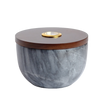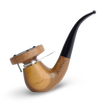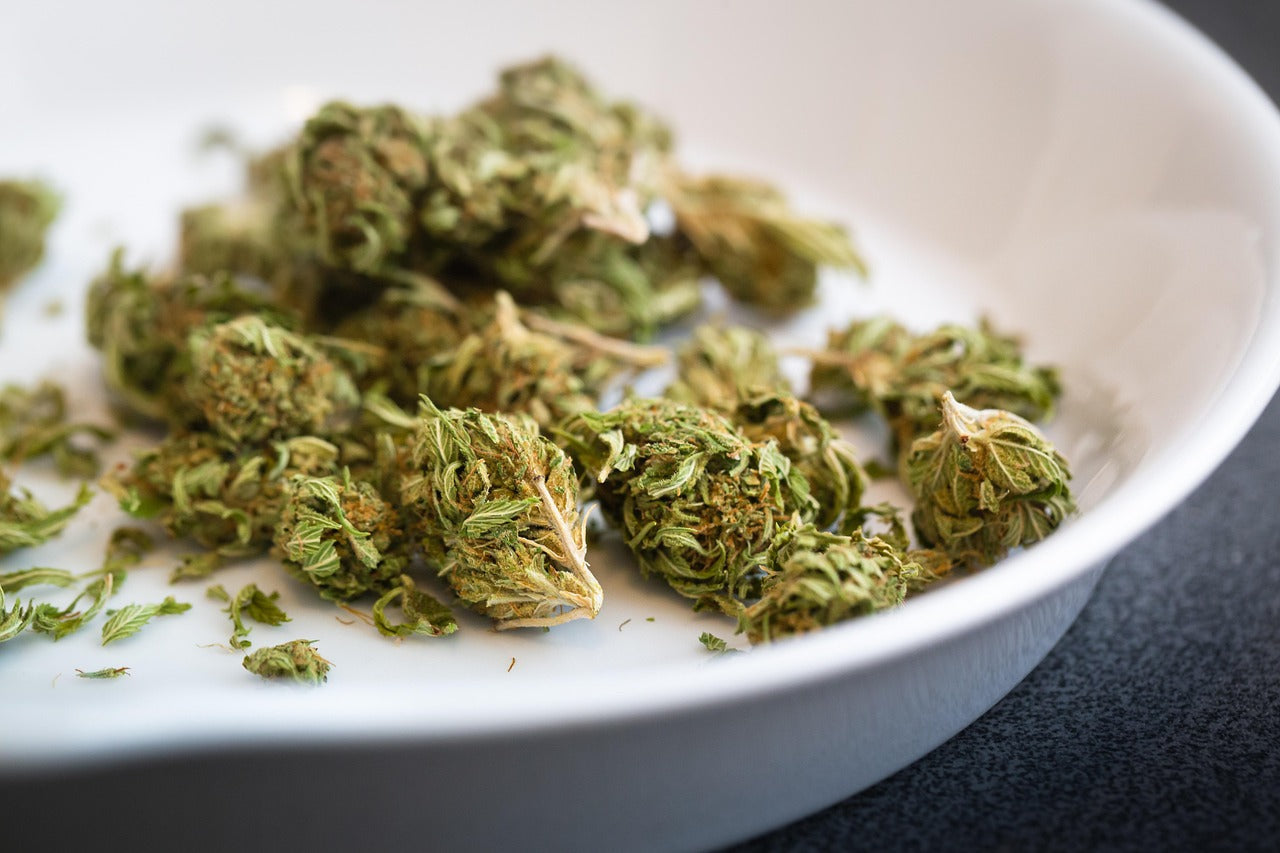Table of Contents
The Truth About Combustion: Why Smoking Wastes Your Herbs
For centuries, combustion — the act of burning plant material — was the primary way to consume herbs. But in the modern age of wellness and precision, we’ve come to understand a crucial truth: smoking is not only harmful to your health, it’s also incredibly inefficient.
When you burn your herbs, you destroy much of their therapeutic value. You also inhale hundreds of harmful byproducts that serve no purpose but to damage your lungs and body. If you're investing in high-quality dry herbs — whether cannabis, lavender, or blue lotus — the last thing you want is to waste their potential through combustion.
This guide explores what really happens when you smoke herbs, why vaporization is a vastly superior alternative, and how modern flame-powered devices like the Vapman Click and Lotus Kit preserve purity, potency, and ritual — without the burn.
1. What Is Combustion and Why Is It a Problem?
Combustion occurs when organic material, like dried herbs, is ignited — usually with a flame. This process involves exposing the material to temperatures above 600°C (1112°F), a level far higher than necessary to release active compounds such as cannabinoids, terpenes, and alkaloids. Instead of gently vaporizing these beneficial molecules, combustion destroys many of them on contact.
Worse yet, combustion breaks down plant matter into ash, tar, carbon monoxide, benzene and a long list of volatile organic compounds. According to a landmark study by Russo et al. (2009), traditional smoking methods cause a 20–30% loss in available cannabinoids due to combustion and sidestream smoke.
The process is also uncontrolled. When you light up, you expose your herbs to rapidly rising temperatures and uneven heating — meaning some compounds burn off too quickly while others never activate at all. That means lower effectiveness, inconsistent dosing, and an experience that’s more harsh than harmonious.
Compare that with vaporization, where heat is precisely controlled to extract the active ingredients — not destroy them. But we’ll get to that shortly. First, let’s look at what’s lurking in that smoke you’re inhaling.
2. The Hidden Toxins in Smoke
When plant matter burns, it doesn't just release cannabinoids or aromatic oils — it also generates over 100 harmful compounds in the form of smoke. These substances include:
- Carbon monoxide – a colorless, odorless gas that reduces oxygen in your bloodstream
- Benzene – a known human carcinogen often linked to blood disorders
- Acetaldehyde – a toxic compound classified as a probable carcinogen by the American Cancer Society
- Hydrogen cyanide – used in chemical weapons, also present in cigarette smoke
- Tar – which coats lung tissue and contributes to chronic bronchitis and emphysema
According to the Canadian Centre on Substance Use and Addiction, smoking cannabis produces many of the same respiratory risks as tobacco, even though cannabis itself is not physically addictive. It’s not the herb that’s the problem — it’s the combustion.
Inhaling these toxins may reduce the immune response in the lungs and contribute to chronic irritation. While the effects of occasional use are less severe than tobacco, the long-term damage can’t be ignored — especially when a cleaner, safer method is available.
3. Why Combustion Wastes Your Herbs
Let’s talk about economics. If you’re investing in high-quality flower — cannabis, lavender, or something more exotic like blue lotus — you want to get the most out of every gram. But combustion wastes herbs in three key ways:
1. Destruction Through Overheating
Many active compounds found in herbs — like terpenes, flavonoids, and specific cannabinoids — have boiling points between 120°C and 220°C. When you expose them to open flame, you incinerate them before they can be released. This means that a significant portion of the herb’s therapeutic potential never reaches your body.
2. Side-Stream Smoke
In a joint or pipe, as much as 50% of active compounds are lost through side-stream smoke — the smoke that rises from the lit end of your device between puffs. This is especially true in group settings or slow-smoking scenarios.
3. Incomplete Conversion
Combustion does not offer precision. Some cannabinoids like THCA or CBDA must be carefully decarboxylated to become active (i.e., turned into THC or CBD). When burned too hot or too fast, these compounds may never activate, leading to reduced potency and effectiveness.
In contrast, vaporization heats the herbs gently and evenly, activating the desired molecules while leaving the rest intact. This means better value per session, less waste, and a more flavorful experience overall.
If you care about your herbs — and your health — combustion just doesn't make sense anymore.
4. Vaporization: A Cleaner, Smarter Method
Vaporization gently heats your herbs to the point where the active compounds evaporate — without burning the plant material itself. This typically occurs between 160°C and 220°C (320°F–428°F), depending on the compounds you want to release.
Because there’s no combustion, you avoid all smoke-related toxins. Instead, you inhale a clean, flavorful vapor that contains the exact molecules you’re after — cannabinoids, terpenes, alkaloids — with none of the ash, tar, or irritation.
Benefits of Vaporization at a Glance:
- More efficient use of your herbs (30–50% more extractable content)
- No smoke or carcinogens
- Better taste — experience the true aroma of each herb
- Control — choose the temperature and tailor your experience
- Less odor — vapor smells far less than smoke and dissipates quickly
Vaporization isn’t just a trend — it’s the logical next step in mindful herbal consumption.
5. What the Science Says
The scientific consensus is clear: vaporization is safer, more efficient, and more effective than combustion.
In a comparative study published in the journal Harm Reduction Journal (2007), researchers found that vaporized cannabis produced virtually no detectable toxins, while smoked cannabis yielded harmful tar, benzene, and carbon monoxide. Users also reported improved respiratory function after switching from smoking to vaping.
Another 2009 clinical trial conducted by UCSF and the San Francisco General Hospital found that vaporization delivered the same amount of THC to the bloodstream as smoking — but without measurable carbon monoxide exposure.
Key takeaway? Vaporization preserves potency while eliminating harm. Whether you’re microdosing CBD or enjoying the full profile of a botanical blend, your lungs will thank you.
6. The Best Devices to Avoid Combustion
There’s no shortage of vaporizers on the market — but not all are created equal. Some battery-powered models may still combust herbs at higher temperatures, while cheap materials can introduce new health concerns. That’s why many users are turning toward flame-powered analog vaporizers — devices that offer full control, no batteries, and unbeatable purity.
Vapman Click
The Vapman Click is a Swiss-designed, battery-free vaporizer with a gold-plated copper pan, click-based temperature signaling, and airflow customization. Its hybrid convection-conduction design extracts maximum flavor with incredible efficiency. It heats in under 5 seconds and fits in your palm — the ultimate on-the-go solution for conscious users.
Lotus Vaporizer Kit
Handcrafted with a beautiful wooden cap and a heat-directing lotus ring, this device uses flame power and patented airflow technology to deliver cool, clean vapor without combustion. There’s no learning curve — just precision, performance, and peace of mind. A favorite among flavor chasers and ritual lovers alike.
Both devices are free of plastic vapor paths, glues, and electronics — meaning what you inhale is just your herbs and heat. Nothing more. Nothing less.
Conclusion
For decades, combustion was considered the default method for enjoying herbs — but the science, the experience, and the results all tell a different story. Burning herbs destroys much of their therapeutic potential, introduces dozens of toxic byproducts, and delivers a harsh, inconsistent effect.
Vaporization offers a better way forward — preserving active compounds, protecting your lungs, and unlocking the full aroma and flavor profile of every herb. Whether you’re using cannabis medicinally, microdosing adaptogens, or simply enjoying the relaxing ritual of herbal inhalation, vaporizing gives you precision and purity that smoking never could.
And with flame-powered analog devices like the Vapman Click and Lotus Vaporizer, you don’t have to sacrifice craftsmanship or ritual. You can inhale with intention — anywhere, anytime — with nothing but your breath and a flame.
Make the switch today. Respect your herbs. Respect your health. Ditch the combustion and rediscover the art of inhaling naturally.
→ Browse our handcrafted analog vaporizers and experience the power of clean vapor, beautifully delivered.
About the Author

Author: Michael Mussner, Founder of INHALE Vaporizers
Michael is a passionate vaporizer designer and entrepreneur from South Tyrol, driven by craftsmanship, sustainability, and the mindful use of natural herbs. With a background in product innovation and a love for analog technology, he founded INHALE to revive flame-powered vaporizers like the Vapman and Lotus. Every product he creates is deeply rooted in authenticity, simplicity, and a respect for nature.
Questions? Contact us here or email support@nowinhale.com.
















Leave a comment
All comments are moderated before being published.
This site is protected by hCaptcha and the hCaptcha Privacy Policy and Terms of Service apply.